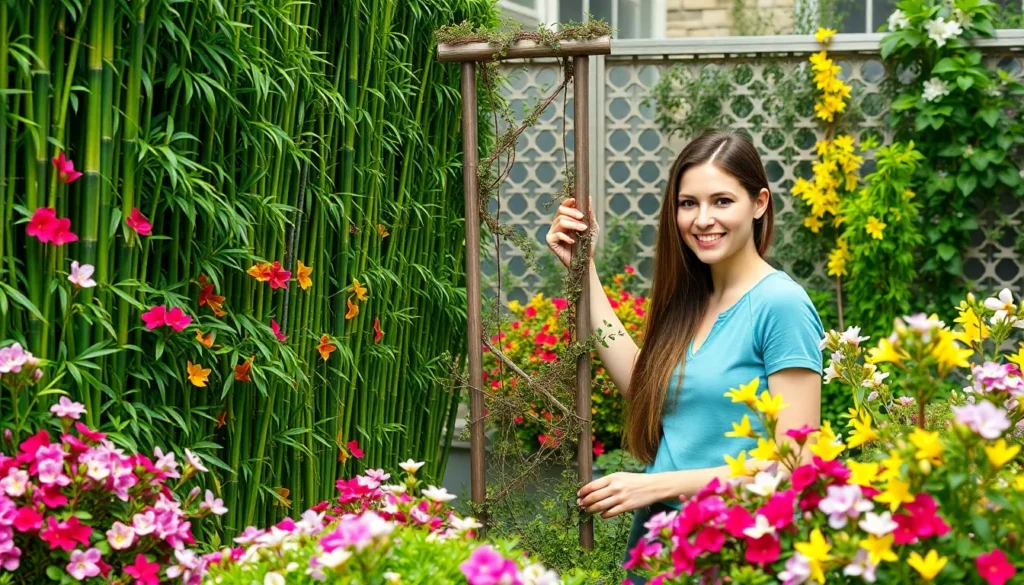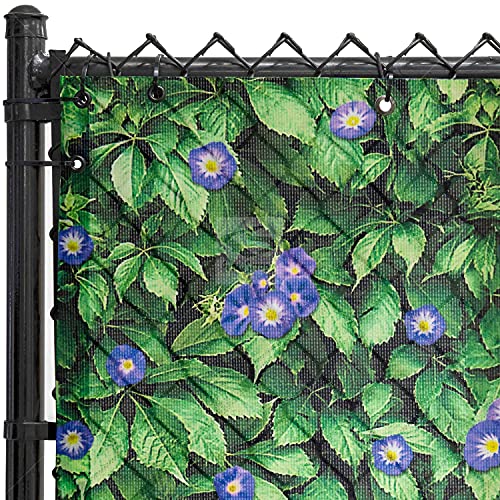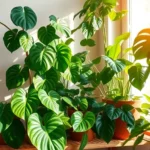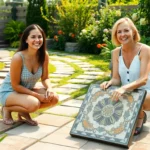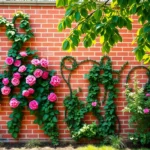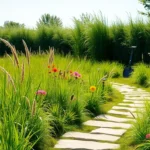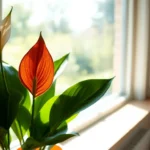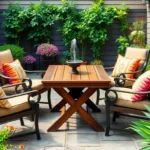We’ve all been there – enjoying our outdoor space only to feel like we’re on display for the whole neighborhood. Garden screening transforms your yard from a public spectacle into a private sanctuary where you can truly relax and unwind.
Whether you’re dealing with nosy neighbors, unsightly views, or simply want to create intimate outdoor rooms, the right screening answers can work wonders. From living walls of lush greenery to stylish architectural elements, there’s a perfect privacy option for every garden style and budget.
Smart screening choices don’t just hide what you don’t want to see – they add beauty, structure, and functionality to your industry. We’ll explore creative ideas that’ll help you create the private outdoor retreat you’ve always dreamed of, turning your garden into a true extension of your home.
Natural Living Screens Using Fast-Growing Plants
Fast-growing plants offer the perfect solution for creating instant privacy while adding natural beauty to your outdoor space. These living screens establish themselves quickly and provide ongoing benefits that artificial barriers simply can’t match.
Bamboo Varieties for Quick Privacy
Bamboo creates dense screening faster than almost any other plant, with some varieties growing up to 3 feet per year. Clumping bamboo varieties like Bambusa multiplex and Fargesia robusta stay contained without spreading aggressively through your garden. Running bamboo types such as Phyllostachys nigra provide thicker coverage but require root barriers to prevent unwanted spreading.
Height ranges vary significantly among bamboo species:
| Bamboo Variety | Mature Height | Growth Rate | Best Zones |
|---|---|---|---|
| Bambusa multiplex | 8-25 feet | 2-3 feet/year | 8-11 |
| Fargesia robusta | 10-15 feet | 1-2 feet/year | 5-9 |
| Phyllostachys nigra | 20-35 feet | 3-5 feet/year | 7-10 |
We recommend planting bamboo in spring for optimal establishment before winter. Space clumping varieties 3-5 feet apart for solid coverage within 2-3 growing seasons.
Evergreen Hedges for Year-Round Coverage
Evergreen hedges maintain their screening power throughout all seasons, making them ideal for consistent privacy needs. Leyland cypress grows exceptionally fast at 3-4 feet annually and reaches mature heights of 40-60 feet when left untrimmed. Thuja Green Giant provides similar rapid growth while staying more manageable at 20-40 feet tall.
Arborvitae varieties like Emerald Green offer slower but steady growth at 12-24 inches per year, perfect for smaller spaces requiring 10-15 foot screens. These evergreens tolerate regular pruning and shaping to maintain desired heights and widths.
Plant spacing depends on your timeline for full coverage:
- Immediate screening: Space plants 3-4 feet apart
- Budget friendly approach: Space plants 6-8 feet apart
- Long term planning: Space plants 8-10 feet apart
Flowering Shrubs for Colorful Barriers
Flowering shrubs combine privacy screening with seasonal color displays that enhance your garden’s visual appeal. Forsythia explodes with bright yellow blooms in early spring before leafing out to create summer screening up to 8-10 feet tall. Lilac bushes offer fragrant purple, white, or pink flowers in late spring while growing 6-12 feet high depending on the variety.
Weigela provides continuous color with flowers ranging from deep red to soft pink, blooming from late spring through summer on 4-6 foot tall plants. These shrubs work especially well when planted in staggered rows or mixed groupings rather than formal hedgerows.
Flowering schedules create year round interest:
- Early spring: Forsythia and flowering quince
- Late spring: Lilacs and spiraea
- Summer: Weigela and butterfly bush
- Fall: Rose of Sharon and beautyberry
We suggest combining different flowering shrubs to extend the blooming season and create ever-changing screening that changes throughout the growing year.
Vertical Garden Walls for Maximum Impact
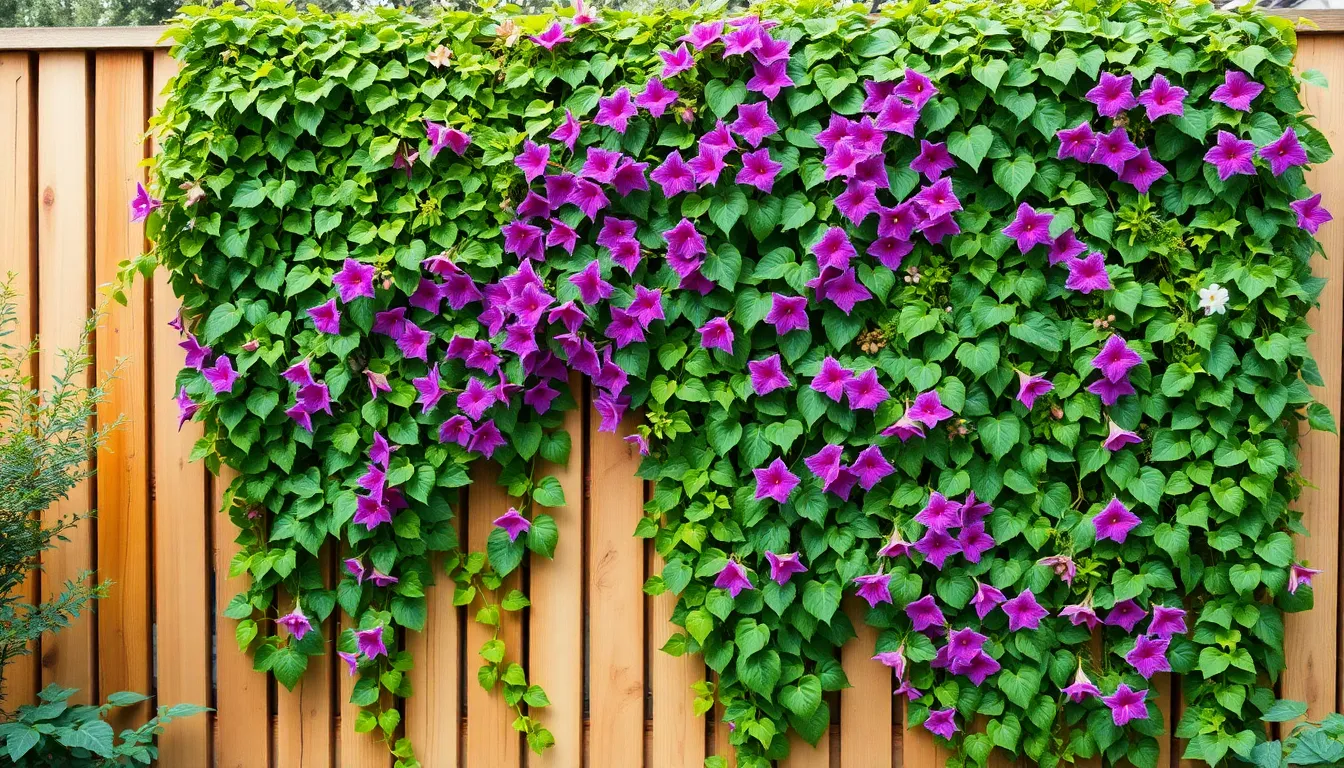
Vertical garden walls transform ordinary fence lines into living masterpieces that maximize both privacy and growing space. These structured systems create stunning focal points while providing effective screening answers for modern gardens.
Trellis Systems with Climbing Vines
Trellis frameworks offer flexible screening answers that support climbing plants for dense upward coverage. We recommend installing these vertical structures as free-standing units or attaching them directly to existing walls for immediate support.
Top climbing vine options include:
- Clematis for colorful seasonal blooms
- Jasmine for fragrant evening scents
- Thunbergia for vibrant orange flowers
Wood, metal, or plastic materials work well for trellis construction, with each offering different aesthetic and durability benefits. Annual vines like morning glory provide quick seasonal coverage, while perennial options like clematis establish permanent screening over time.
Spacing trellises 6-8 feet apart allows vines to interweave and create continuous coverage. Most climbing plants reach full screening height within 2-3 growing seasons with proper support.
Living Wall Planters and Modules
Living wall planters provide pre-fabricated answers for instant vertical gardens that require minimal installation effort. These modular systems come equipped with built-in irrigation features that simplify maintenance while ensuring consistent plant health.
Popular planting options include:
- Succulents for low-maintenance coverage
- Perennials for seasonal color changes
- Herbs for functional kitchen gardens
Modular units adapt to various spaces, from small balconies to extensive patio walls. Different sizes and materials allow customization based on exact garden needs and aesthetic preferences.
Built-in irrigation systems reduce daily watering requirements while ensuring even moisture distribution. Most systems support 20-30 plants per square meter, creating dense coverage within the first growing season.
Wire Mesh Panels with Training Plants
Wire mesh panels deliver lightweight, cost-effective screening that’s perfect for temporary or budget-conscious installations. These panels require minimal structural support while providing excellent plant training surfaces.
Effective training plants include:
- Ivy for evergreen coverage
- Climbing beans for edible screening
- Morning glory for rapid seasonal growth
Plants weave naturally through mesh openings, creating organic barriers that define garden boundaries without solid construction. This approach works particularly well for dividing garden spaces or creating temporary privacy screens.
Installation requires only basic tools and takes less than a day for most residential applications. Training plants typically achieve full coverage within 6-8 weeks during peak growing season.
Temporary and Movable Screening Solutions
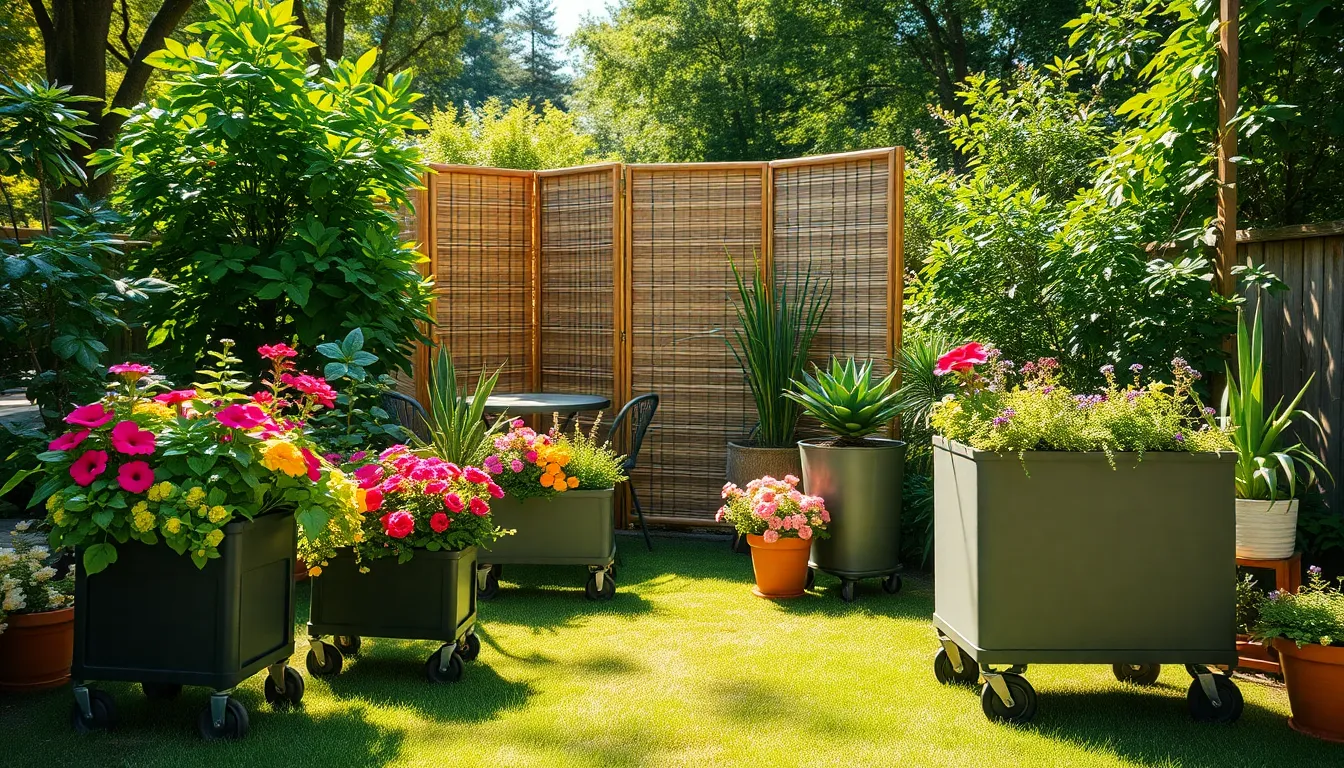
Sometimes we need screening answers that adapt to our changing needs throughout the seasons. These flexible options let us reconfigure our garden privacy without permanent installations.
Portable Plant Containers on Wheels
Portable plant containers on wheels offer the ultimate flexibility for creating privacy exactly where we need it. These versatile answers can be filled with plants or flowers to provide natural screening that moves with our garden’s requirements. Rolling planters allow us to block exact views during outdoor gatherings and then relocate them when we want to open up the space.
Large wheeled containers work particularly well for seasonal arrangements, letting us showcase different plants throughout the year. We can position these mobile screens to protect seating areas from wind or create intimate dining spaces for entertaining. The convenience of wheels means we can easily move heavy planted containers without straining our backs or disrupting root systems.
Folding Screen Panels for Flexibility
Folding screen panels provide instant privacy that sets up and stores away in minutes. These flexible screening options come in several practical configurations that suit different garden needs and aesthetic preferences.
Bamboo panels offer lightweight portability that’s perfect for creating quick privacy barriers. Their natural appearance blends seamlessly with garden settings while providing effective visual screening. We can easily carry bamboo screens to different locations and set them up without tools or permanent fixtures.
4-panel screens deliver more substantial coverage for larger areas that need comprehensive privacy. These sturdy options typically fold accordion-style for compact storage during off-seasons. Multiple panels can be connected to create extensive screening walls for parties or seasonal outdoor living spaces.
Lattice panels excel at supporting climbing plants while providing immediate structural screening. These versatile screens allow us to combine instant privacy with growing opportunities for vines and climbing flowers. The openwork design creates partial screening that doesn’t feel too enclosed while offering support for seasonal plant growth.
Seasonal Privacy with Annual Plants
Seasonal privacy with annual plants creates ever-changing screening that changes throughout the growing year. These temporary answers let us experiment with different privacy levels and visual effects without long-term commitments to permanent plantings.
Vines like ivy or clematis grow quickly to cover screens and create dense seasonal barriers. We can plant these climbing annuals in containers positioned along fence lines or around temporary supports. Fast-growing vine varieties provide impressive coverage within a single growing season.
Large leaf plants such as elephant ears or coleus create substantial visual barriers during peak growing months. These dramatic annuals offer bold foliage that blocks views effectively while adding tropical flair to garden spaces. Container planting allows us to position these screening plants strategically and move them as needed for optimal privacy coverage.
Annual screening plants give us the freedom to try different combinations each year while providing cost-effective privacy answers that don’t require permanent industry changes.
Hard Landscaping Elements for Permanent Structure
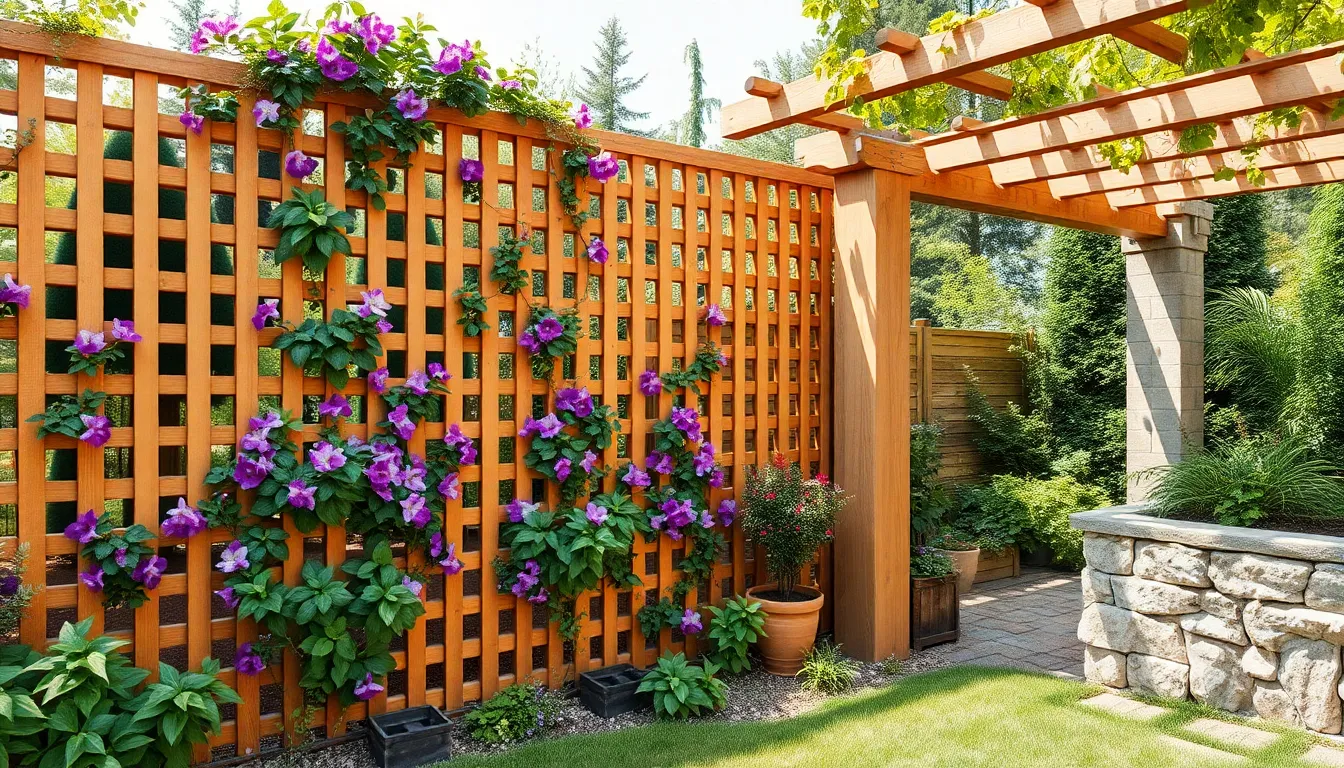
Building durable screening structures creates lasting privacy answers that withstand weather while maintaining their effectiveness year round. These architectural elements form the backbone of comprehensive garden screening systems.
Decorative Fence Panels and Materials
Lattice screening panels offer versatile answers that we can customize with climbing plants to achieve both privacy and visual appeal. These panels work exceptionally well when paired with fast growing vines like clematis or jasmine, creating dense coverage within a single growing season. Decorative trellis panels serve dual purposes by supporting evergreen climbers while adding architectural interest to garden boundaries.
Wooden lattice comes in various grid sizes, allowing us to choose the right density for our privacy needs. Metal versions provide longer lasting durability, especially in areas with harsh weather conditions. Vinyl lattice panels require minimal maintenance while offering consistent appearance throughout changing seasons.
Stone Walls with Integrated Planting
Stone walls with embedded planting pockets create natural screening that improves over time as vegetation establishes. We can design these walls with built in planters along the base or integrated growing spaces throughout the structure. Natural stone materials like fieldstone or limestone provide excellent drainage while creating attractive backdrops for screening plants.
Retaining wall gardens maximize vertical growing space by incorporating terraced planting areas into the wall design. These structures work particularly well on sloped properties where we need both screening and soil retention. Dry stacked stone walls allow root systems to establish naturally between stones, creating living walls that strengthen over time.
Gabion walls filled with stone offer modern screening answers that we can enhance with trailing plants cascading through the wire mesh. These structures provide instant privacy while allowing creative planting opportunities in the spaces between stone layers.
Pergolas and Arbors with Overhead Coverage
Pergolas with overhead slats create partial screening that filters views while maintaining open garden feel. We can adjust slat spacing to control privacy levels and incorporate climbing plants for additional coverage. These structures work effectively as transitional elements between different garden areas while providing functional screening.
Arbors and garden arches adorned with flowering vines create beautiful entrance points that also serve as screening elements. Popular climbing options include climbing roses, grape vines, and honeysuckle, which provide seasonal coverage and fragrant blooms. Wooden arbors offer classic appeal, while metal versions provide longer lasting durability with minimal maintenance requirements.
Overhead pergola coverage using fabric panels, bamboo screening, or planted vines creates private outdoor rooms beneath the structure. We can combine solid roofing materials with open sections to balance privacy needs with natural light requirements.
Multi-Level Screening for Enhanced Privacy
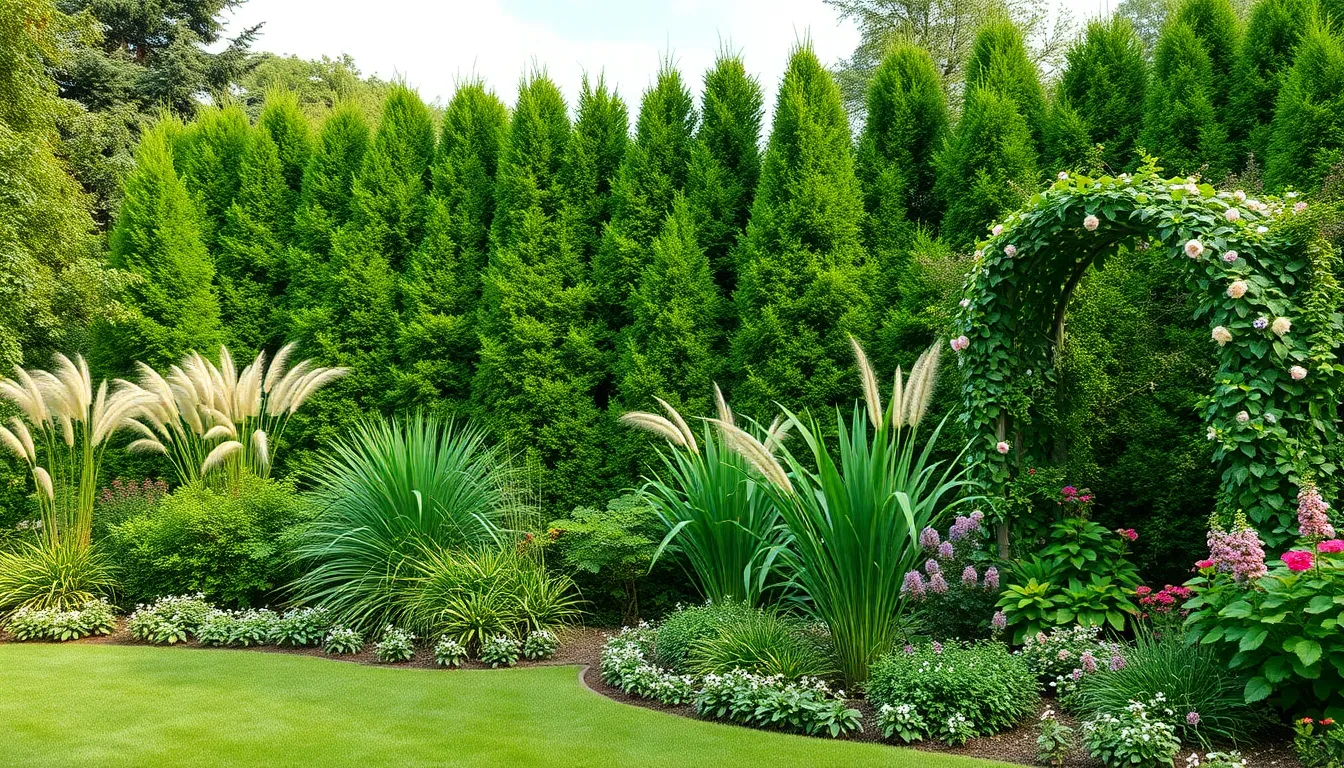
Creating depth and visual interest while maximizing privacy requires strategic layering of different screening elements. We can achieve superior coverage by combining various heights and textures to eliminate sight lines from multiple angles.
Layered Planting Heights and Textures
Building effective multi-level screens starts with understanding how different plant heights work together to create dense coverage. We recommend using tall trees as the backdrop, medium shrubs for middle screening, and low ground cover to complete the layered effect.
Potted arrangements offer exceptional flexibility for creating these layered displays. Position taller plants at the back and shorter ones in the front to create visually interesting compositions that can be adjusted seasonally. Different sized containers add another dimension to the screening while allowing us to move elements as our privacy needs change.
Texture combinations enhance both privacy and visual appeal when we mix fine-leaved plants with broad-leaved varieties. Ornamental grasses paired with dense evergreen shrubs create natural looking barriers that feel less structured than traditional hedging. This approach works particularly well when we incorporate plants with varying growth habits and foliage colors.
Combination of Trees, Shrubs, and Ground Cover
Strategic plant selection across multiple heights ensures comprehensive screening without creating an overwhelming wall effect. We achieve the most natural looking privacy barriers by mimicking forest edge conditions with carefully chosen plant combinations.
Large trees serve as our primary sight blockers, particularly effective for screening views from second story windows and distant vantage points. Fast growing options like hybrid poplars or evergreen varieties such as Leyland cypress provide quick results for urgent privacy needs.
Medium shrubs fill the crucial middle zone where most eye-level screening occurs. Dense growing varieties like boxwood, privet, or flowering options such as forsythia create effective barriers while adding seasonal interest. Spacing these shrubs 3 to 4 feet apart ensures quick coverage as they mature.
Ground cover plants complete our screening system by covering lower sight lines and creating visual continuity. Spreading varieties like creeping thyme, sedum, or pachysandra prevent gaps at soil level while requiring minimal maintenance once established.
Staggered Installation for Natural Appearance
Avoiding rigid straight lines makes our screening feel more organic and visually appealing. We create natural looking privacy barriers by varying placement patterns and incorporating architectural elements alongside plantings.
Arbors and arches adorned with flowering vines serve as focal points while dividing garden areas naturally. These structures provide immediate screening while supporting climbing plants that enhance coverage over time. Strategic placement of these elements breaks up long fence lines and adds vertical interest.
Living walls maximize screening potential in limited spaces through vertical garden systems. These green screens work particularly well for patios, courtyards, or narrow side yards where traditional planting space is restricted. Pre-fabricated modules with built-in irrigation systems make installation and maintenance straightforward.
Irregular spacing between screening elements creates more convincing natural barriers. We recommend varying distances between plants by 1 to 2 feet rather than maintaining uniform spacing. This technique prevents the institutional appearance that perfectly aligned plantings can create while still ensuring adequate coverage.
Creative DIY Screening Projects
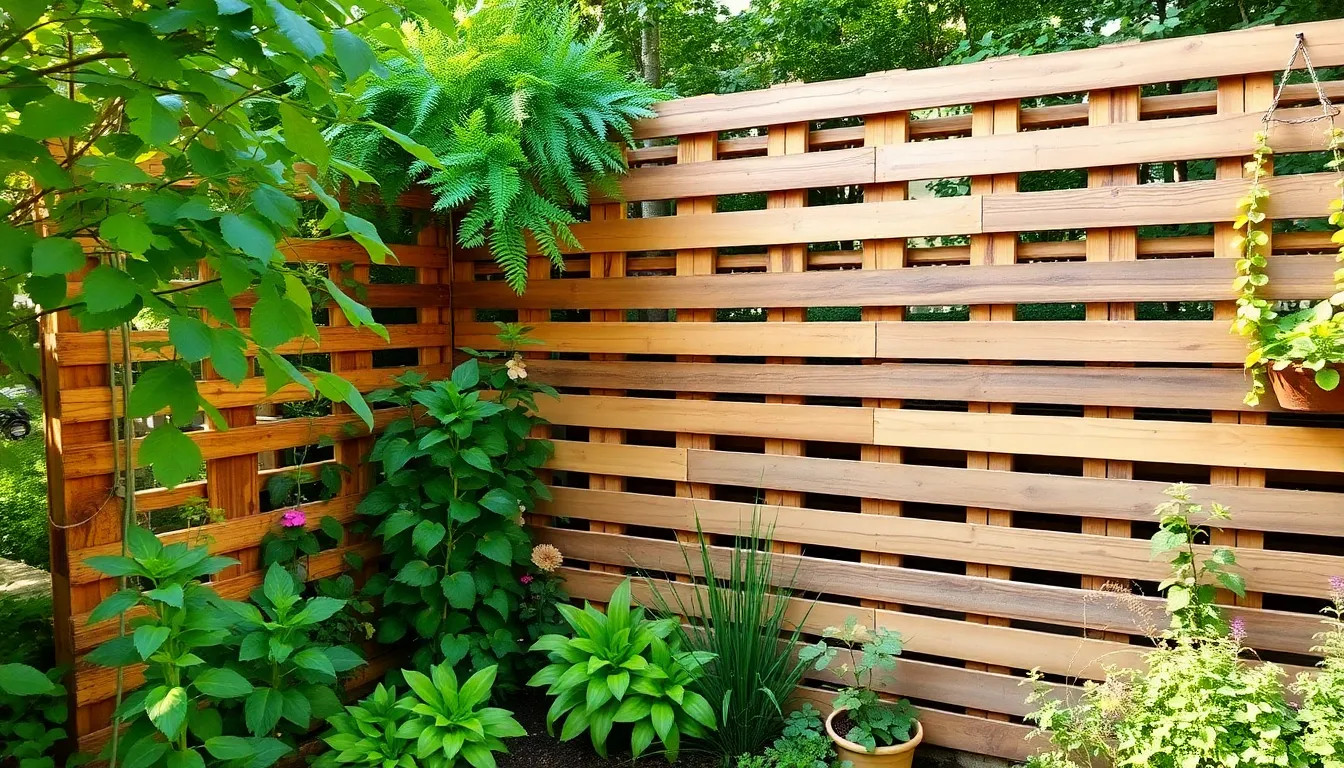
Building our own garden screens offers endless possibilities while staying within budget. We’ll explore three approaches that transform common materials into stunning privacy answers.
Upcycled Materials for Budget-Friendly Options
Repurposed pallets create unique lattice screens that cost almost nothing to build. We disassemble old pallets carefully, clean each board thoroughly, then reassemble them into custom lattice patterns that fit our garden’s dimensions perfectly.
Old fencing materials transform into one-of-a-kind garden screens with minimal effort. We salvage weathered boards, pickets, and posts from demolition sites or neighbors’ renovations, giving these materials new life as decorative privacy barriers.
Reclaimed wood planks stack horizontally or vertically to form modern-looking screens. We sand down rough edges, apply weather-resistant stain, then mount the planks to create contemporary barriers that rival expensive store-bought options.
Vintage shutters make charming privacy screens when hinged together in accordion style. We collect mismatched shutters from flea markets or architectural salvage yards, then paint them in coordinating colors for cohesive garden screening.
Custom-Built Lattice and Framework
Wooden frame lattice screens allow us to customize every dimension and spacing detail. We build sturdy frames using 2×4 lumber, then add horizontal and vertical slats or decorative mesh inserts that match our garden’s aesthetic perfectly.
Cedar framework construction provides long-lasting durability for outdoor conditions. We use cedar boards to create geometric patterns, diamond lattice designs, or simple horizontal slat arrangements that age beautifully over time.
Modular panel systems let us build screening in manageable sections. We construct individual panels that connect together, making installation easier and allowing future reconfiguration as our garden needs change.
Custom wooden fence designs incorporate horizontal or vertical slat patterns we design ourselves. We vary board widths, spacing, and heights to create visual interest while maintaining the privacy coverage our outdoor space requires.
Artistic Elements Combined with Functional Design
Decorative metal screens combine laser-cut patterns with practical privacy benefits. We install ornate metal panels featuring botanical motifs, geometric designs, or abstract patterns that cast beautiful shadows while blocking unwanted views.
Natural material combinations blend willow branches, bamboo poles, and decorative elements into visually stunning screens. We weave these materials together using traditional techniques, creating organic-looking barriers that complement planted areas seamlessly.
Mirrored screen panels reflect light throughout our garden while creating the illusion of expanded space. We mount weatherproof mirrors in wooden frames, positioning them strategically to bounce sunlight into darker corners while maintaining privacy.
Artistic copper screens develop gorgeous patina over time as weather naturally ages the metal. We create or purchase copper panels with cut-out designs, watching them transform from bright penny color to elegant green-blue tones that enhance our garden’s character.
Low-Maintenance Screening Options
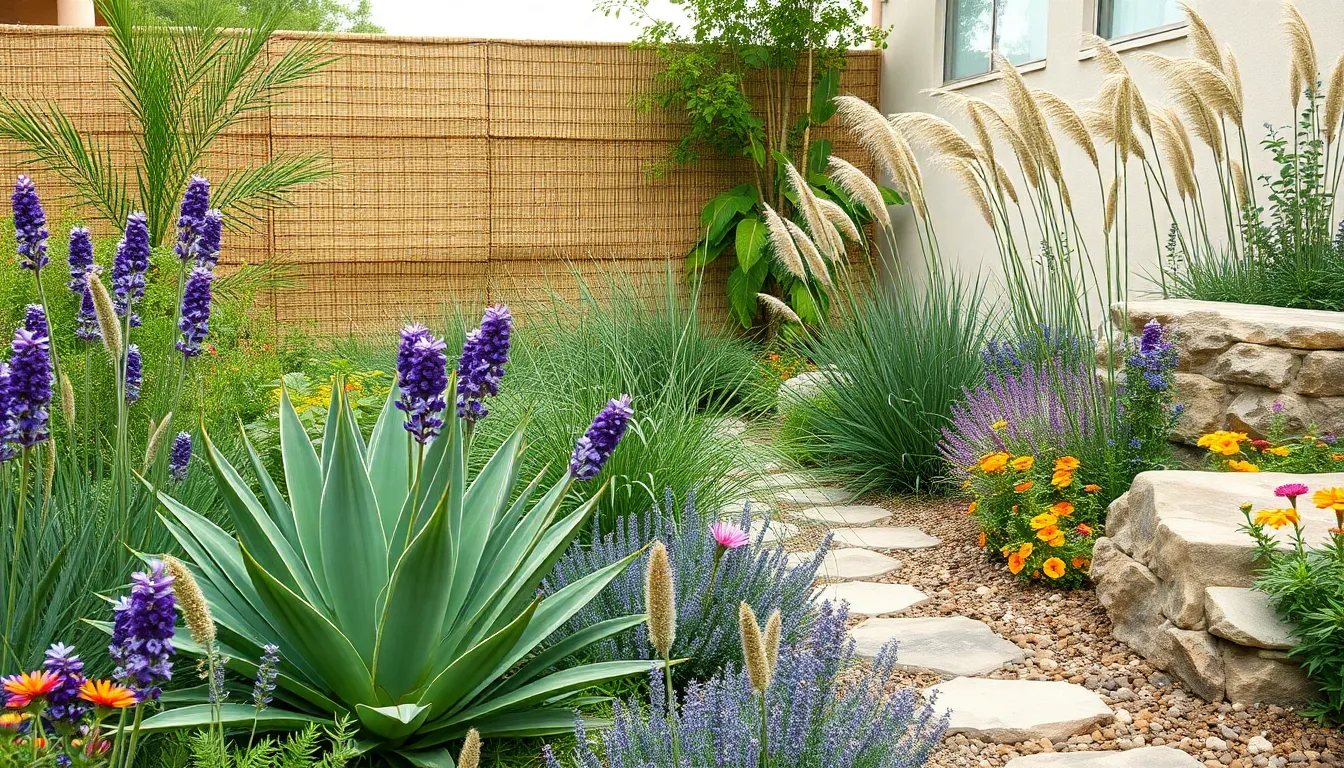
We understand that effective screening shouldn’t require constant attention or high maintenance costs. Smart screening choices let us create privacy while minimizing ongoing care requirements.
Drought-Tolerant Plants for Easy Care
Drought resistant plants offer excellent screening potential with minimal water requirements. Native succulents like agave and yucca create striking vertical barriers while thriving in dry conditions, requiring watering only during extended drought periods. Cacti varieties provide unique texture and form for screening purposes, particularly effective in southwestern and desert climates where they flourish without irrigation systems.
Fragrant shrubs combine function with sensory appeal in low water environments. Lavender creates dense, aromatic hedges that require pruning only once annually after flowering. Rosemary grows into substantial screening shrubs reaching 4-6 feet in height, offering year round coverage with occasional trimming. These Mediterranean plants establish deep root systems that access groundwater, reducing our dependence on regular watering schedules.
Ornamental grasses provide movement and texture while tolerating drought conditions exceptionally well. Fountain grass creates flowing screens that sway gently in breezes, requiring division every 3-4 years. Pampas grass forms dramatic barriers reaching 8-10 feet tall with feathery plumes that last through winter months.
Self-Supporting Structures Requiring Minimal Upkeep
Metal screening materials deliver lasting performance without regular maintenance demands. Bamboo panels offer natural aesthetics with weather resistant properties, lasting 10-15 years with minimal care requirements. Aluminum screening systems resist rust and corrosion while supporting climbing plants that enhance coverage over time.
Architectural elements combine form with function in permanent screening answers. Arbors and arches create overhead coverage while supporting flowering vines that require pruning only once per season. Pergola structures filter views effectively while allowing air circulation and natural light penetration.
Stone and masonry options provide permanent screening with virtually no maintenance needs. Decorative concrete blocks stack easily to create custom height barriers while allowing partial light transmission. Gabion walls filled with local stone materials develop character over time while requiring no ongoing care beyond occasional weed removal.
Native Species for Natural Integration
Regional plants adapt seamlessly to local climate conditions while reducing maintenance requirements significantly. Native trees like eastern red cedar or western juniper create columnar screening that grows 12-18 inches annually without supplemental watering after establishment. These species integrate naturally with existing ecosystems while providing habitat for local wildlife.
Indigenous shrub combinations create layered screening that changes with seasonal cycles. Native dogwood varieties offer spring flowers, summer foliage, and winter interest through colorful bark and berries. Elderberry bushes form dense thickets reaching 8-12 feet in height while attracting beneficial insects and birds to our gardens.
Ground level native plants complete comprehensive screening systems with minimal intervention required. Wild ginger and native ferns spread naturally in shaded areas beneath taller screening plants. Native wildflower meadows create seasonal color displays while requiring only annual mowing to maintain density and prevent woody plant encroachment.
Seasonal Considerations for Garden Screening
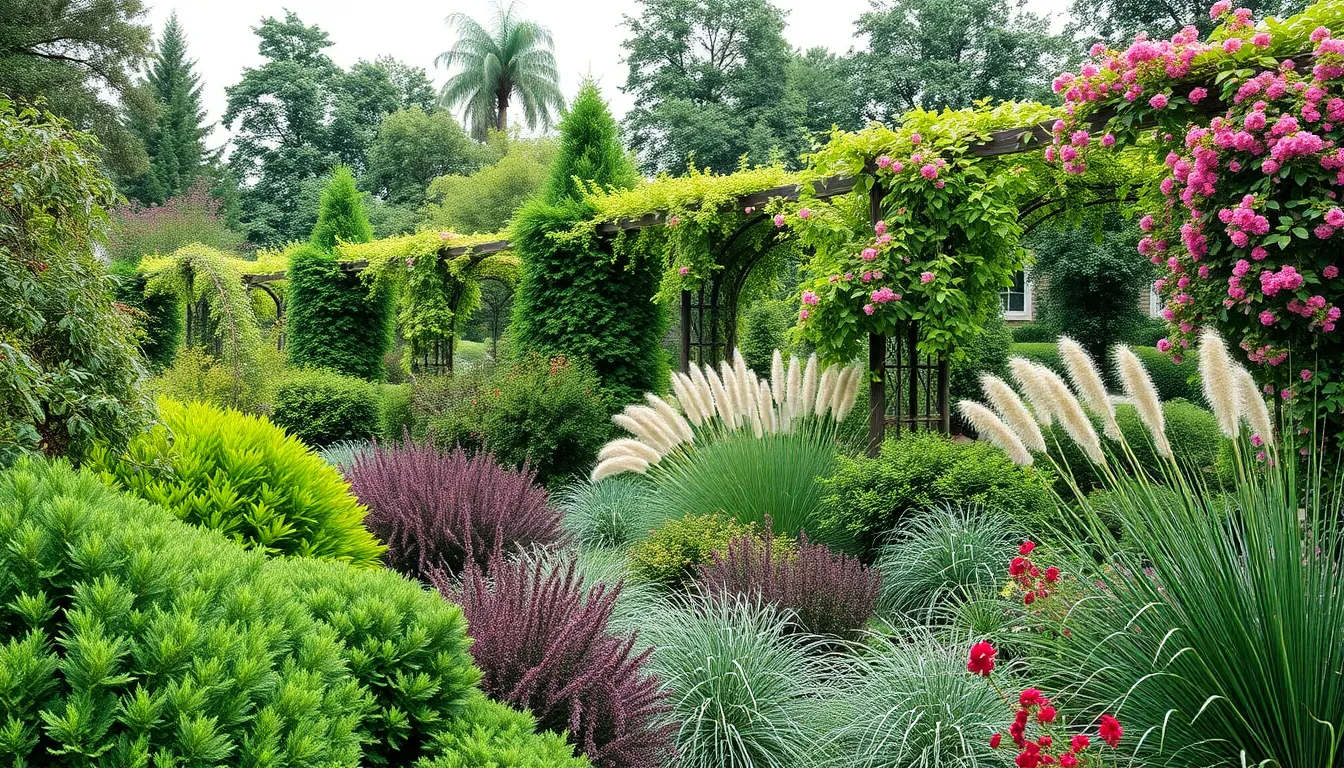
Garden screening needs change throughout the year, requiring strategic planning to maintain both privacy and visual appeal across all seasons.
Year-Round Interest with Mixed Plantings
Combining evergreen and deciduous plants creates the most effective seasonal screening strategy. We recommend pairing bamboo varieties like Bambusa multiplex with flowering climbers such as clematis to ensure continuous coverage while adding seasonal color variations. Evergreen shrubs including Magnolia grandiflora provide the backbone of year round privacy with their large, persistent leaves and beautiful spring blooms.
Layering different plant types maximizes visual interest throughout the seasons. Fast growing hedges like Thuja Green Giant offer immediate winter structure, while deciduous flowering shrubs such as forsythia and lilacs contribute vibrant spring colors before leafing out. Mixed plantings using both textures and growth habits create ever-changing screens that evolve naturally with each season.
Strategic plant selection ensures something beautiful happens in every season. We suggest incorporating ornamental grasses alongside traditional hedging plants to add movement and texture during winter months. Fragrant shrubs like lavender and rosemary contribute sensory appeal while maintaining their screening effectiveness through multiple seasons.
Winter Structure and Summer Fullness
Architectural elements provide essential winter framework when deciduous plants lose their leaves. Trellises and arches create permanent structure that remains visually appealing during dormant months, then disappear beneath lush summer growth. These supporting structures bridge the gap between seasons while offering climbing plants the framework they need for dense coverage.
Wire mesh panels and pergolas offer year round screening potential with seasonal variation. During winter, these structures provide immediate privacy screening, while summer months bring complete coverage through vigorous vine growth. We recommend training ivy or climbing beans on these frameworks to achieve maximum seasonal transformation.
Living wall planters and modular systems adapt to changing seasonal needs. These pre fabricated answers maintain consistent screening during winter months through evergreen plantings, then expand their coverage through annual vines and seasonal additions. Built in irrigation systems ensure optimal plant health throughout temperature fluctuations and seasonal changes.
Timing Installation for Optimal Growth
Installing plants during their dormant season minimizes transplant stress and ensures optimal establishment. We recommend planting most screening trees and shrubs during late fall or early spring when plants focus energy on root development rather than leaf production. This timing strategy results in stronger, more resilient screening that establishes faster.
Bamboo and other fast growing plants offer more flexible installation windows. These vigorous species can be planted at almost any time provided they receive adequate watering during establishment. Bamboo varieties like Fargesia robusta adapt quickly to new locations and provide screening benefits within their first growing season.
Container grown plants extend the optimal planting window for screening installations. Portable plant containers on wheels allow for strategic placement during any season, then permanent installation when conditions are ideal. This approach lets us create immediate privacy while waiting for optimal planting conditions for permanent screening elements.
Conclusion
Creating effective garden screening doesn’t have to be overwhelming when you have the right approach. We’ve shown you that privacy answers can be both functional and beautiful whether you choose living screens or architectural elements.
The key is matching your screening method to your exact needs budget and timeline. Fast-growing plants offer quick results while permanent structures provide lasting value. Combining different approaches often yields the best outcomes.
Remember that successful screening is about layering and creativity rather than following rigid rules. Your garden’s unique character should guide your choices as you transform your outdoor space into the private sanctuary you’ve always wanted.
Frequently Asked Questions
What are the best plants for creating a natural privacy screen?
Fast-growing bamboo varieties like Bambusa multiplex and Fargesia robusta offer quick, dense coverage. Evergreen hedges such as Leyland cypress and Thuja Green Giant provide year-round screening. Flowering shrubs like forsythia and lilacs create colorful barriers. Combining different plants creates dynamic seasonal displays while maintaining privacy throughout the year.
How can I create temporary garden screening solutions?
Portable plant containers on wheels offer flexible privacy that can be relocated as needed. Folding screen panels made from bamboo or lattice provide instant, removable privacy. Annual climbing vines and large-leaf plants create seasonal barriers that can be changed yearly, offering dynamic temporary screening solutions for evolving outdoor spaces.
What are the benefits of vertical garden walls for screening?
Vertical garden walls maximize privacy and growing space by transforming fence lines into living masterpieces. Trellis systems support climbing vines for dense coverage, while living wall planters offer pre-fabricated solutions with built-in irrigation. Wire mesh panels provide lightweight, cost-effective screening that allows for easy plant training and customization.
How do I create multi-level screening for enhanced privacy?
Layer different screening elements strategically using tall trees, medium shrubs, and low ground cover for comprehensive coverage. Stagger installation with varying plant heights and textures to create natural-looking barriers. Avoid rigid lines for organic appearance, and combine arbors with living walls to maximize screening potential in limited spaces.
What hard landscaping elements work best for permanent screening?
Decorative fence panels like lattice and trellis systems can be customized with climbing plants for lasting privacy. Stone walls with integrated planting pockets create natural screening that improves over time. Pergolas and arbors provide overhead coverage while allowing climbing plants, enhancing overall garden design with effective privacy solutions.
How can I maintain privacy screening throughout all seasons?
Combine evergreen and deciduous plants for year-round coverage with seasonal interest. Pair bamboo with flowering climbers for continuous screening and seasonal color. Use architectural elements like trellises and pergolas for winter structure. Plant during optimal times for strong establishment, and consider container-grown plants for immediate privacy solutions.

